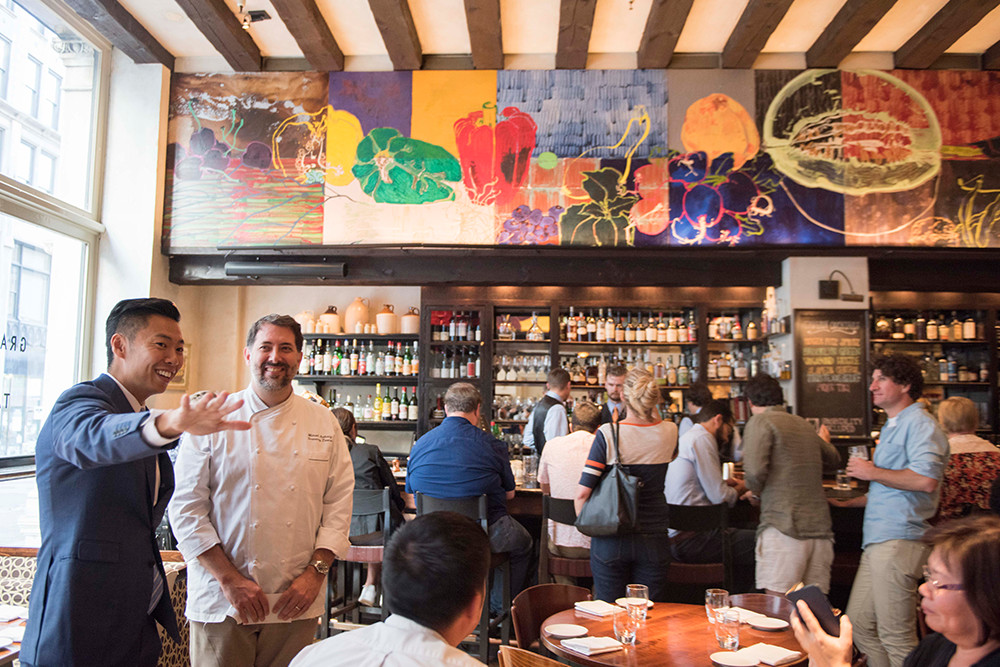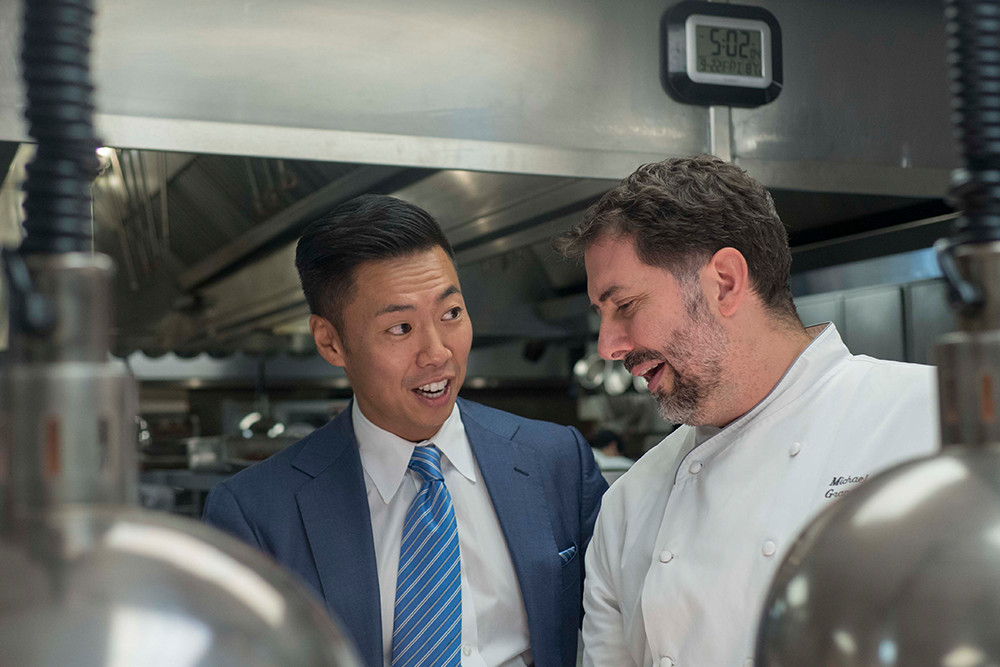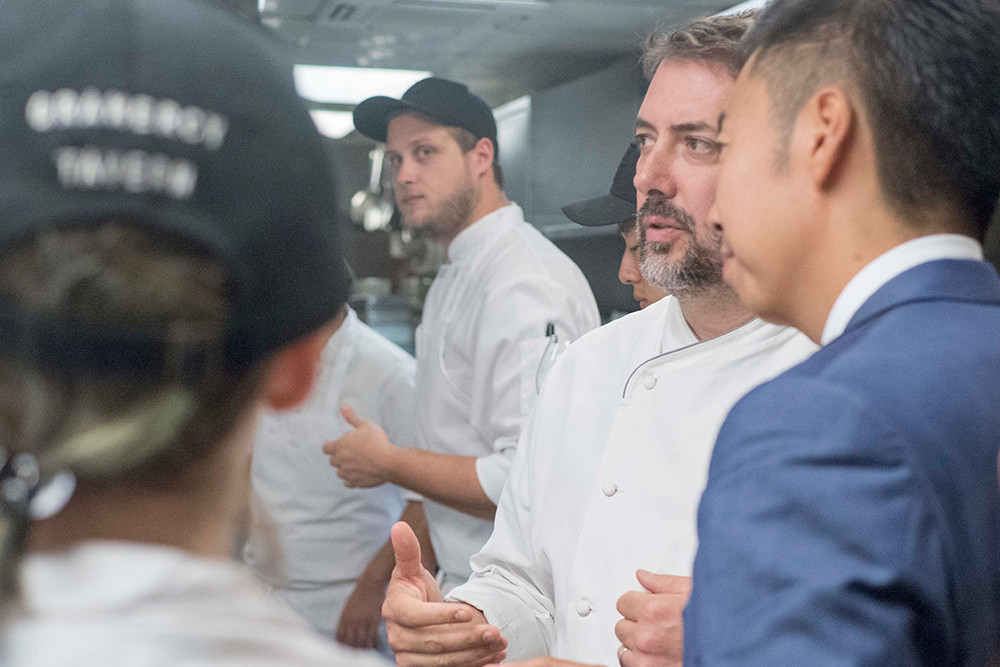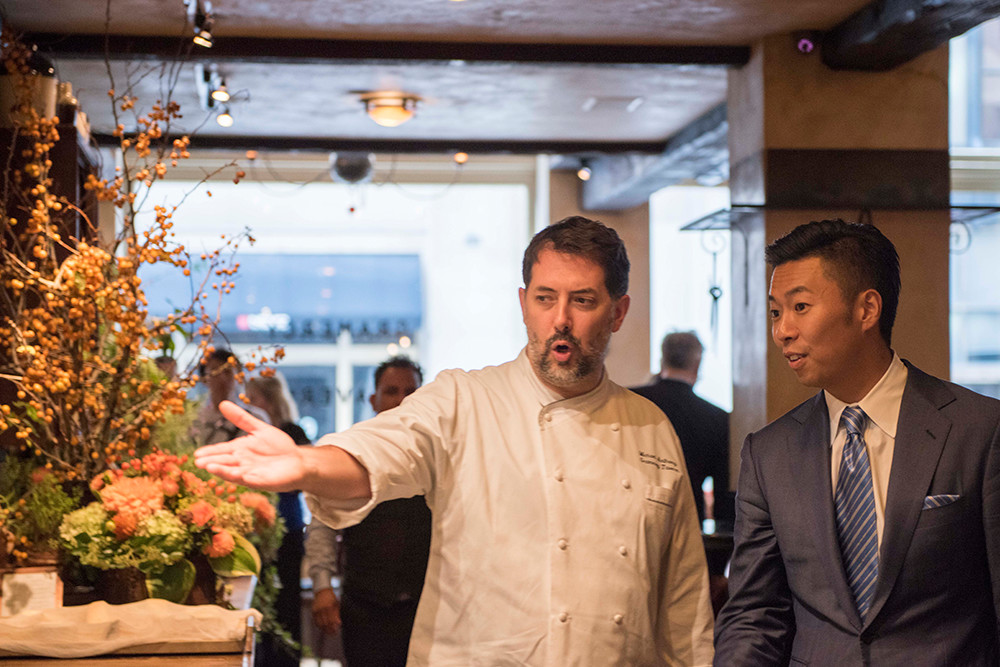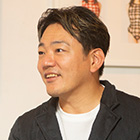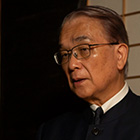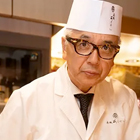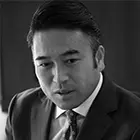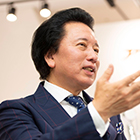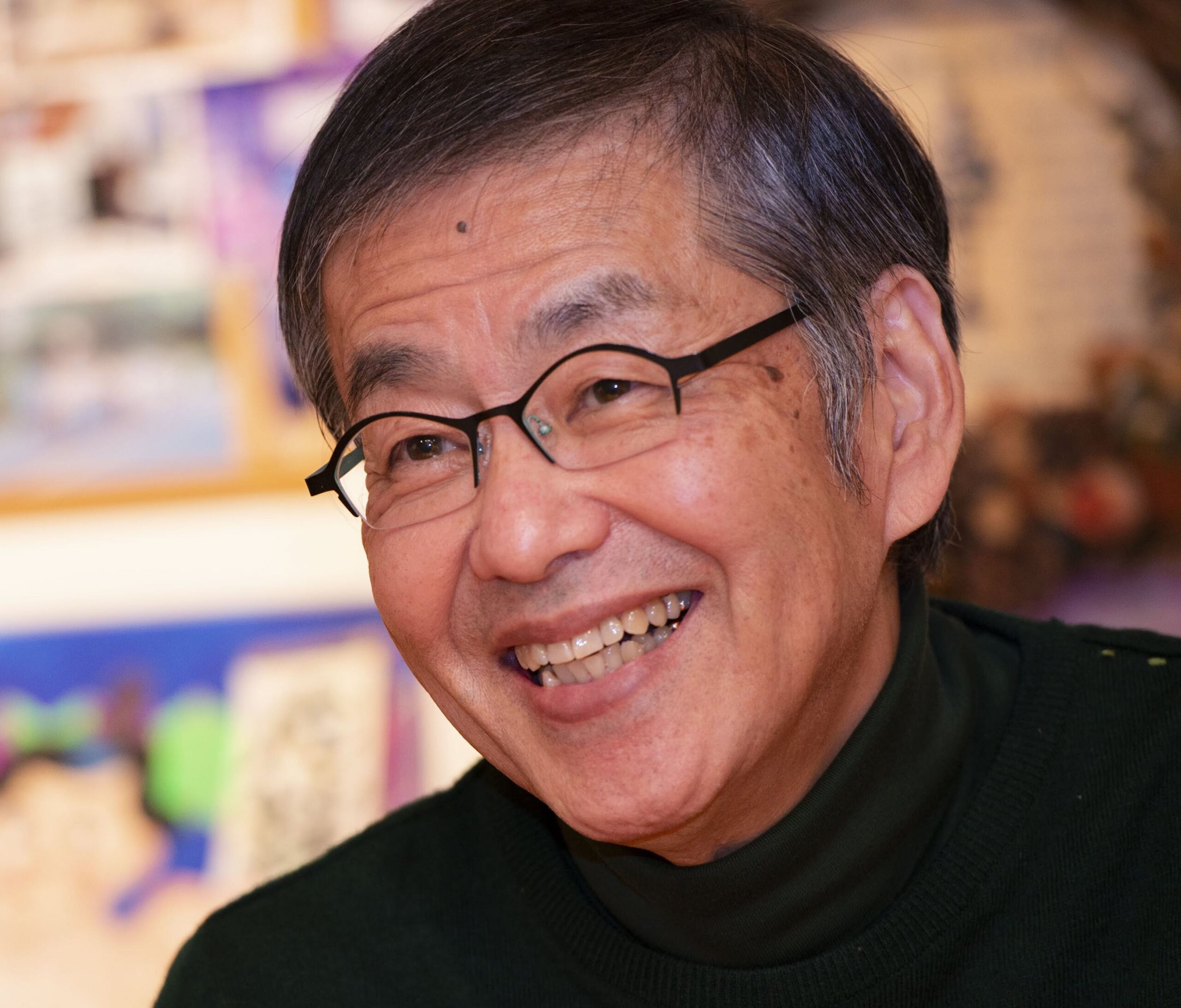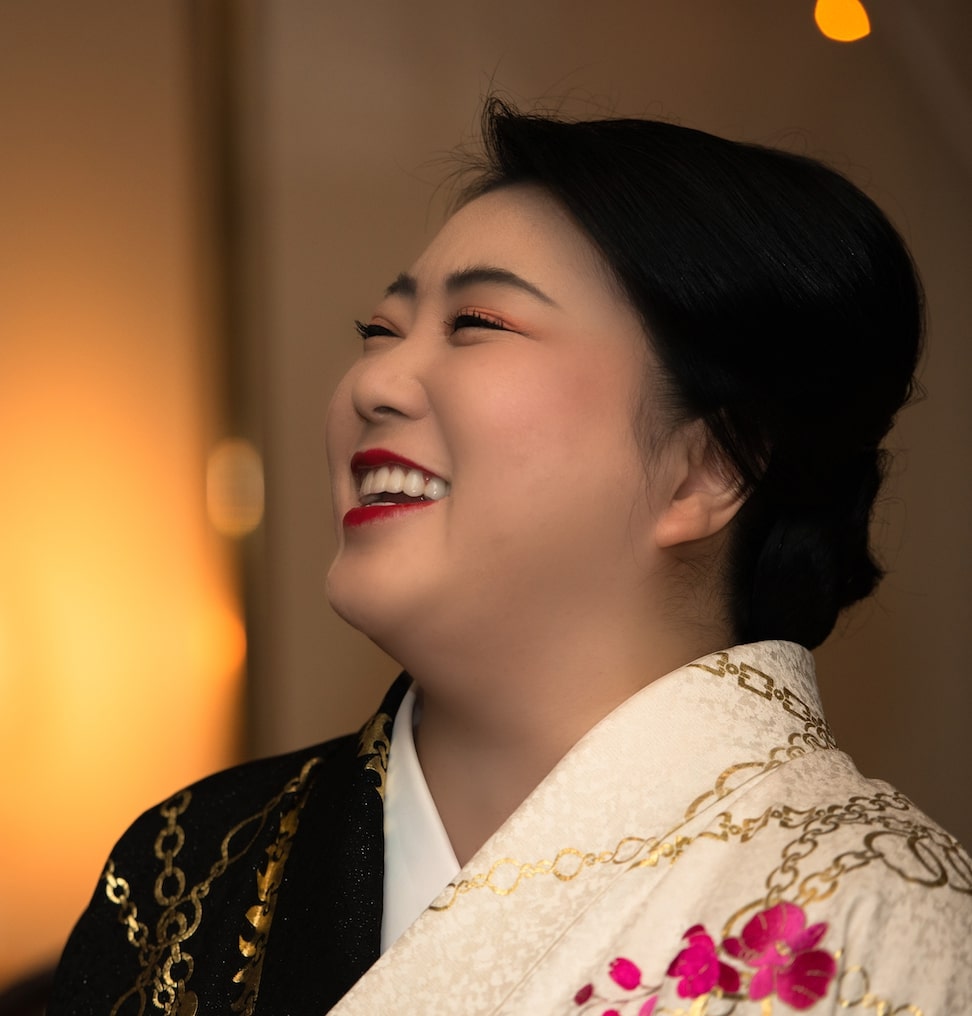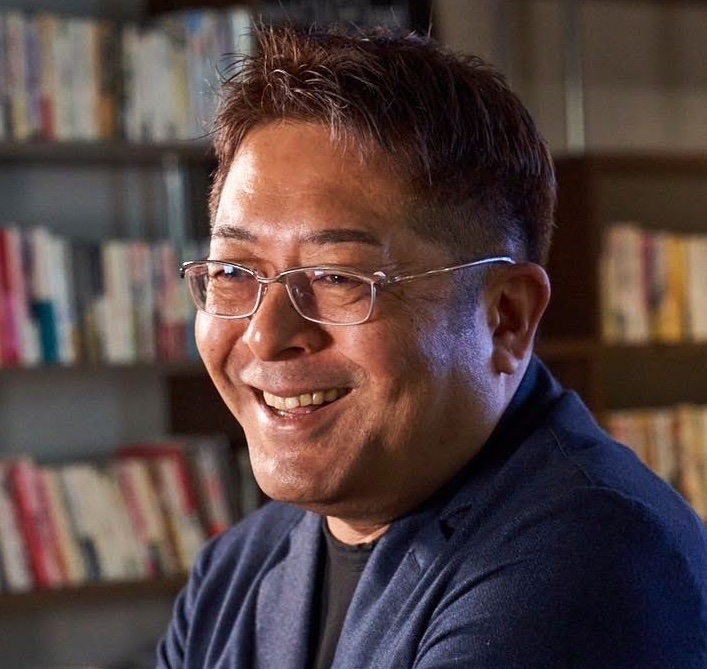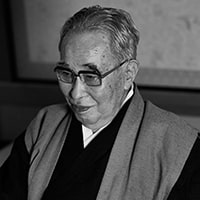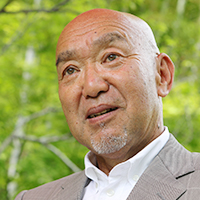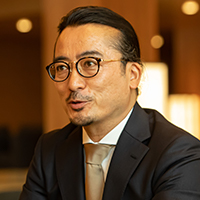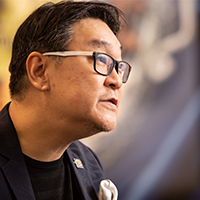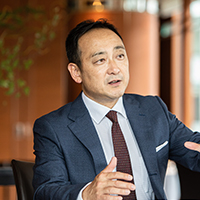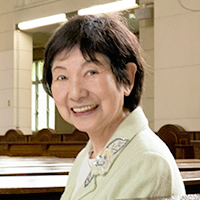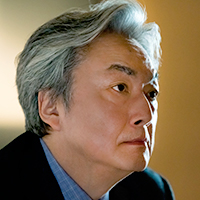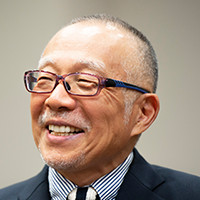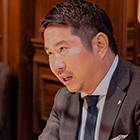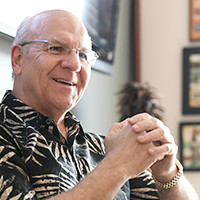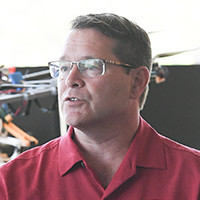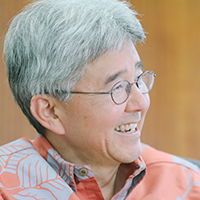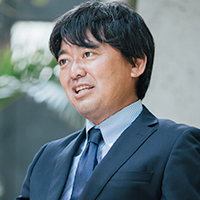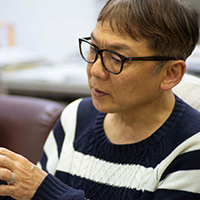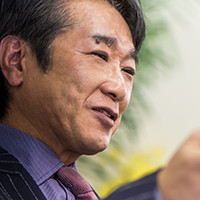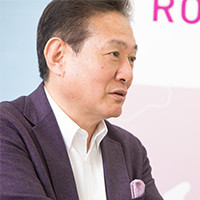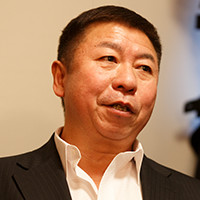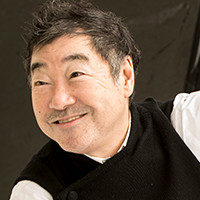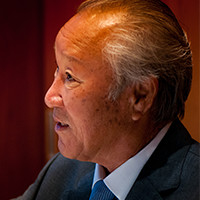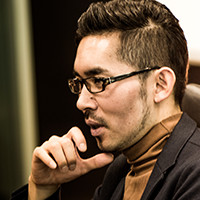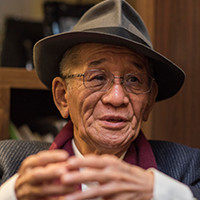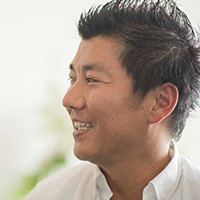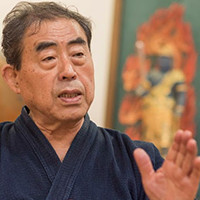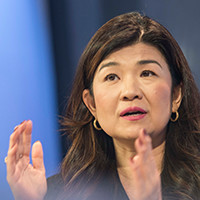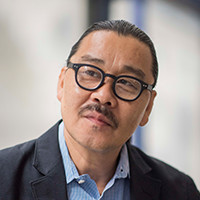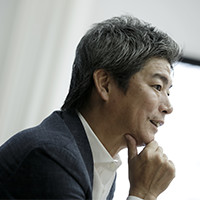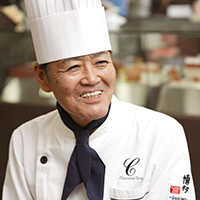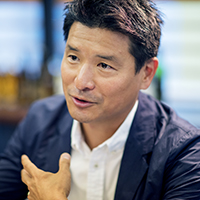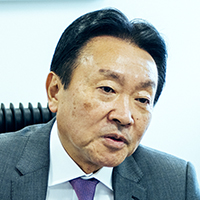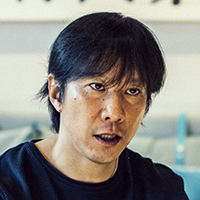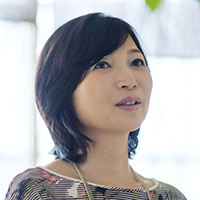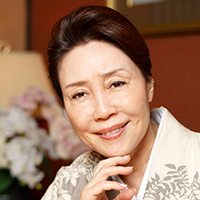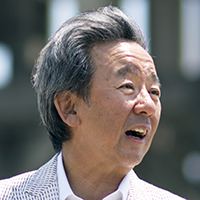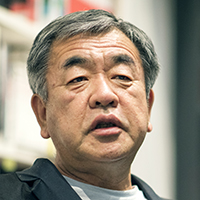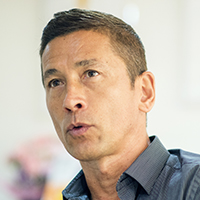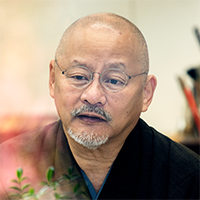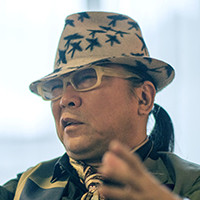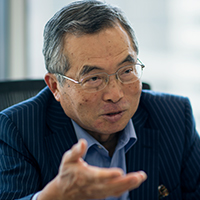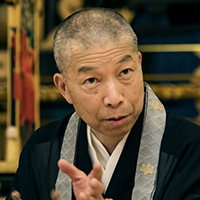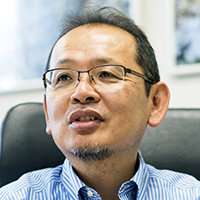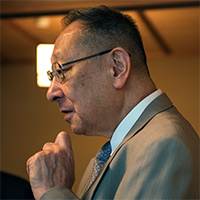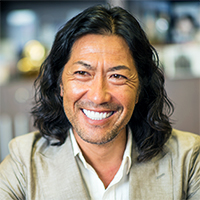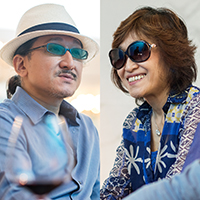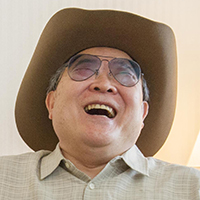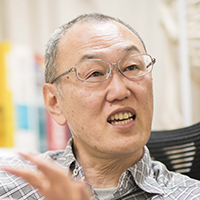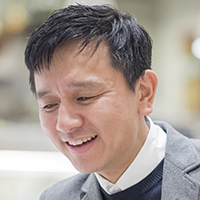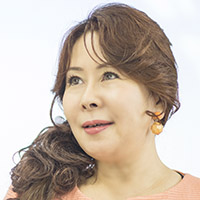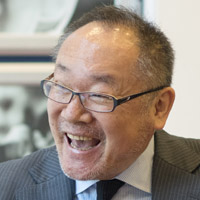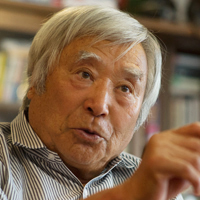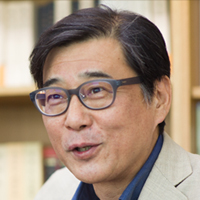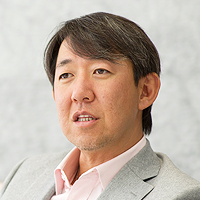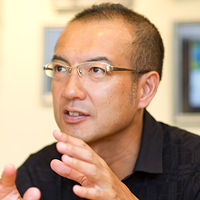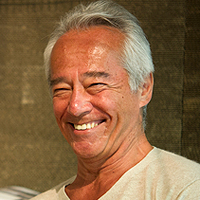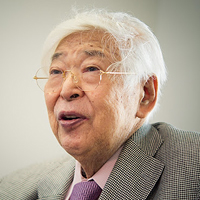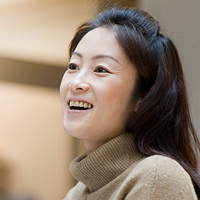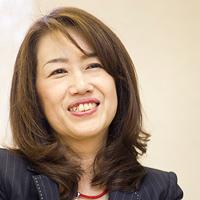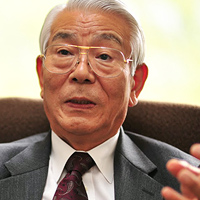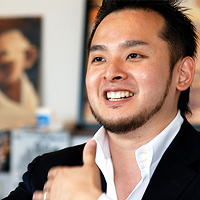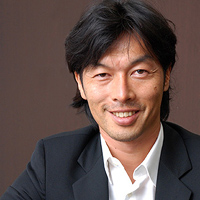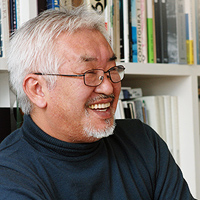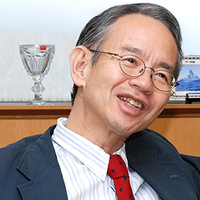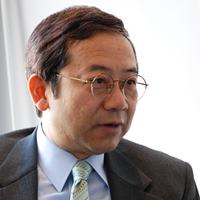
Since 2006, Michael Anthony has brought a fierce seasonality to Manhattan's Gramercy Tavern, culling his experiences in Japan and France to create a new template for what he calls "contemporary American cooking."
Profile
第71回 Michael Anthony()
Executive Chef, Gramercy Tavern
Michael Anthony is Executive Chef and Partner of Gramercy Tavern, as well as Executive Chef and Managing Director of Untitled and Studio Cafe at the Whitney Museum of American Art. Mike joined Gramercy Tavern as the Executive Chef in 2006. Under his leadership, the restaurant has earned a three-star New York Times review (2007) and James Beard Awards for “Outstanding Restaurant” (2008) and “Best Chef: New York City” (2012). In 2015, Mike won the James Beard Award for “Outstanding Chef,” a national recognition. His book, V is for Vegetables, won the 2015 James Beard Award for Best Vegetable-Focused Cookbook."
What is Contemporary American Cooking
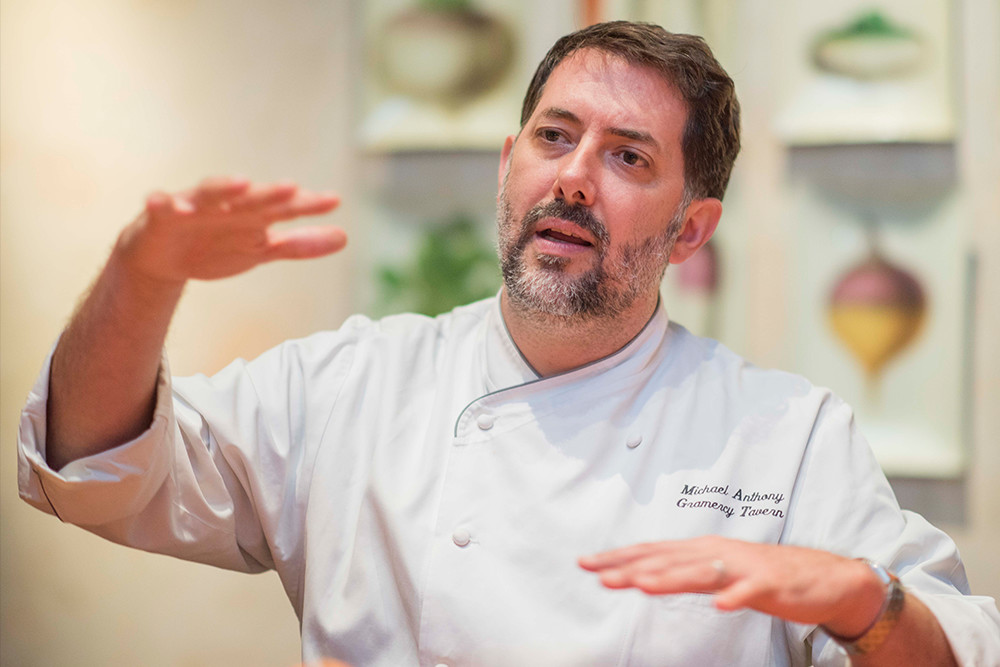
I’ve always felt especially lucky to live and work in New York City, and in the United States in general. When I travel to Japan – or anywhere outside of the United States – people ask me what kind of cooking I do and I will say, “Well, I work in an American restaurant, and we practice contemporary American cooking.” And that is usually followed by a blank stare.
Outside of the context of living in the United States, no one quite yet understands what contemporary American cooking is. What it aspires to, what defines it, and what makes it unique from other styles of cooking. And I think that we are in a moment where American cooking has left its infancy. I don’t know what to call this stage exactly, but let’s just say that we’re in our adolescence and that we are trying to decide how to break the rules in order to become interesting. Teenagers do this, some more rebellious than others, but they are finding themselves. They are asking themselves the questions “Who am I?” and “What do I want to be?”
People are now asking much harder questions of us because they’ve seen some of our initial tricks, and they’ve learned that it’s not just new and it’s not something that no one has ever seen before. There is a competitive spirit. Now more than ever, we have competition, and not just within New York City or the United States. The world is truly sharing information. Young cooks are traveling around the world, so there is sharing like never before. Even countries like Japan, which used to be so insular when it came to their official apprenticeships and their inside knowledge of cooking and culture. Years ago, Japanese chefs were always pleasant and content with meeting chefs from around the world but still looked at those meetings as not necessarily impactful because there was this sense that an outsider wouldn’t fully understand the essence of Japanese hospitality. I’m not sure if it’s true in other industries like fashion and art, but it was especially true in cooking.
I will admit that I was in the group that didn’t know what role the tea ceremony played in Japanese hospitality or how the traditions of seasonal cooking and kaiseki traditions evolved. It’s a big generalization, but it’s only relatively recently – maybe in the last 10, 15, or 20 years – that we’ve seen Japan start to open up in terms of cooking and recognized the enormous impact its cooking has had on the way the world sees the act of fine dining cooking. This fact has translated through some of the great chefs of France, Italy, and Spain, but nonetheless, it’s captivating the world now more than ever.
So I see this whole process as a real advantage for American cooks if they are mindful and disciplined and pay attention to studying the history and evolution of culture and cooking. But, at the same time, they need to allow themselves to openly define their unique voices. That’s why I feel we’re at an exciting crossroads.
Making and Breaking Tradition
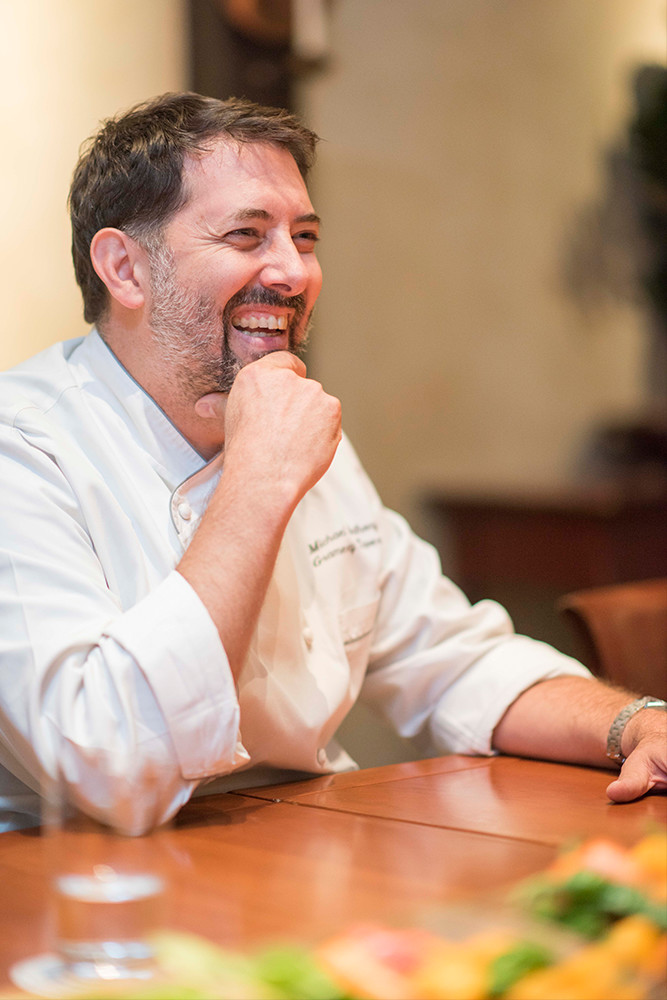
On-ko-chi-shin is a Japanese phrase that means to learn from the old but start something new. You appreciate what the people before you did while doing something new. Well, the concept of on-ko-chi-shin is quite interesting. We Americans are not particularly good at that. If you look at New York, the people who live here have such a short institutional memory. I’ll frequently mention chefs who have had an impact, either on my career or the New York dining scenes, and many young people have never heard of them – even the very people who work in our kitchen.
That is just the nature of things. In some ways, I see this manifest itself in the superficiality of life in Japan. For example, rather than hang on to a refrigerator for 25 or 30 years – when physically the machinery was well built and could last for 30 years with proper maintenance – Japanese families are much more likely to replace it with the latest model because of new and innovative functionality. In New York City we see this with the evolution of real estate and buildings, where we’re very quick to demolish what is old. There may or may not be a mostly overlooked plaque on the wall that says what happened there. And unfortunately, we are like this with our families as well. My dad’s family is of Italian-American descent, and while my grandparents were born in the United States, they lived in a working-class community surrounded by first- and second-generation Italian immigrants. I never met my great-grandparents. I don’t know all of their first names. I don’t know much about who they were as people. I know they existed, but I barely know anything about them, and that’s only four generations ago.
But at the same time, when I was in Japan last, I met the 14th-generation chef of a restaurant in Kyoto. It is almost incomprehensible to grasp what that means – that so many people who were connected by blood, one to the next, all transformed their creative energy into the same endeavor. It’s astounding. When we start talking about our lives and the world of relativity, we as Americans honestly have a very difficult time. There is almost no comprehension of that. Those who don’t understand history are doomed to relive it. So I think we may have reached a critical point where we have undervalued the nature of history and our own history. We have failed to learn from our own lessons.
I think there is a balance in life between the liberty of an individual in choosing their own path and continuing a legacy. I can see the value in both, and maybe the magic lies somewhere in between. I would be lying if I didn’t say that I feel very lucky in my own life. I think my generation has had both the luxury and curse of having to ask ourselves what we want to do precisely because we are not bound by family or country. We now live in a world – despite racial bias – where there are more openings than ever before, so people from around the world have unprecedented access to a world that was never available in the past. While my mom was a good cook, nothing in my family ever pointed me in the direction of becoming a chef. There is something extremely powerful and liberating in the idea that we are not necessarily bound by tradition. As long as we can find a way to move forward in good taste – and I know that’s a subjective word – then we can use that liberating quality to our advantage to do some exciting things.
Finding a Voice as an American
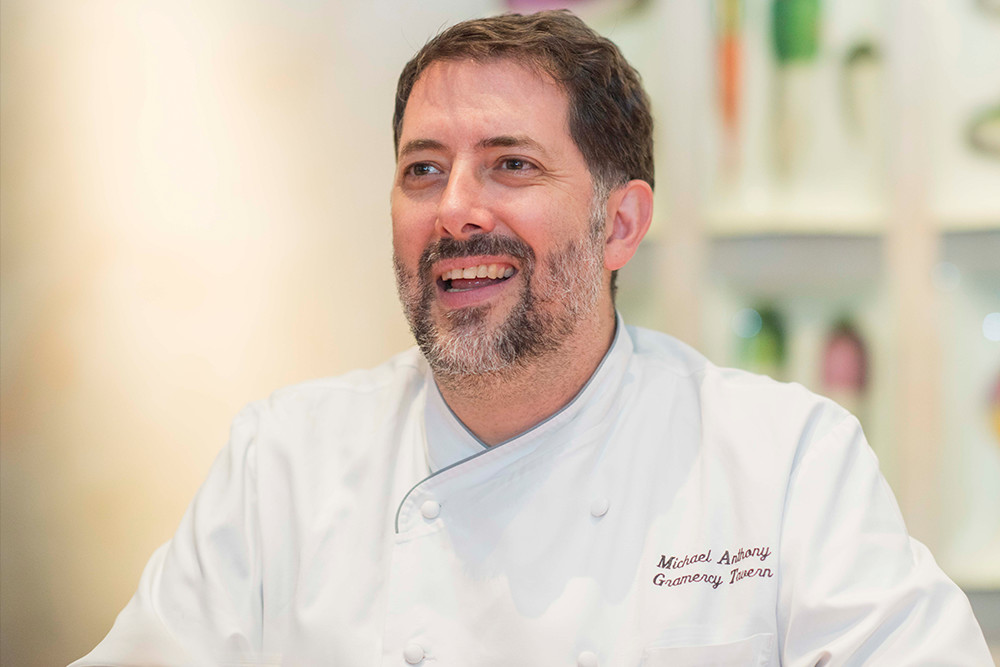
I have a major in French and a minor in Japanese. The idea to study Japanese came from a love of languages. I had studied Japanese while I was in France on a bike trip, where I met two Japanese guys who I rode with for five days. I returned to college to finish my minor in Japanese, and the day I graduated from college, I moved to Japan. I wanted to practice the language, and food was a great way to do it, so I got a job in the early morning at a bakery that was run by a very generous person who agreed to show me how to bake if I worked hard. It was just an eye-opening experience for me to be connected with the town that I lived in.
Eventually, I wrote a letter to the Culinary Critique of International Tribune saying that I lived in Japan and was thinking of applying to the Tsuji cooking school. I heard back and was introduced to Shizuyo Shima, who owned a restaurant in Roppongi. Her story is in and of itself an incredibly inspiring one. She had worked in France for a very famous chef, fighting against all odds to make an apprenticeship happen. She moved back to Tokyo in the 80s and opened her own business in what was then a quiet neighborhood of Roppongi. It was literally across the street from where the Roppongi Midtown Tower is now. Shizuyo shared such a charming, quaint, and personal expression of French-Japanese food, but she had trained in such a difficult apprenticeship that she in some ways reenacted that challenge with me.
During my apprenticeship, I had many moments of self-doubt. Sometimes I even thought it had gone too far, wondering whether or not she was trying to kill me. But I survived until one day she finally told me, “I’ve taught you everything that I know, so it’s time for you to move on.” She told me to go out on my own and go to cooking school. Despite my plans to stay in Japan, she urged me to go to Paris. I had been there before and spoke the language, so it was imaginable. Shizuyo wanted me to follow in her footsteps, and while I wasn’t entirely sure, I ended up following her advice and went to France. And I don’t regret it one bit. Things seem to have worked out quite well. It brought me to another interesting chapter in my life and gave me the ability to learn, move on, and face new challenges.
When I moved back stateside to New York, I really thought my story would be defined by living in France and Japan. I thought I would come here and establish a style of cooking that was very closely related to all the things that I had seen and learned. Many people in the United States are interested in those countries, and I thought that would be the way to create a career. I’m still interested in all of those subjects, but once I got here, I realized that it would be important to try to find my own voice and tell my story through the lens of being American. Because while I studied intently about what it’s like to live in France and in Japan, how would I really know how authentic it was?
I really wanted to find my own voice through the lens of cooking food from an American perspective, but what is that? What is American food? As I mentioned, the timing is quite incredible because many people, in fact, the entire world is asking themselves the same questions: “What is American cooking and where is it going? What defines it? Why is it interesting? Is anyone really interested in it?” I think that the answer is an emphatic yes. There are many ways in which to describe what has happened, and I feel really lucky about coming to Gramercy Tavern. Not only is it an amazing stage to talk about American food, it is also a quintessential American restaurant. I’ve had a lot of freedom in which to evolve my personal style and tell that story from a stage that comes with a lot of attention.
Adding a New Chapter to the Gramercy Tavern Story

Stepping into a beloved restaurant was the easiest and the hardest thing that I have ever done. Because when you join an existing team – and an existing restaurant – sometimes it’s hard to leave your mark. What more is there to say? This restaurant was already one of the most beloved restaurants in New York when I arrived. Before finalizing my decision, I asked myself the question, “Is there a way to add to that story?” It’s also a question that I ask every person that I hire: “Do you have the courage to add to our story?” Because everyone who comes here, no matter their job or experience level, can and should be able to add to the story. That’s what makes this a dynamic place to work. We are not just a product of a few individuals – we’re a team.
The second question I ask everyone is: “Do you feel capable of leaving your station better than you found it?” And that means more than just literally, “Do you clean up?” It means, do you come to work each day with an intellectual attitude of asking important questions of yourself and of the people around you. Do you hold people – our team as a whole – to high standards, and can you do it in a way that is friendly and non-confrontational? That’s a tough thing to do. If you think about it, both of the questions that I ask new people have nothing to do with their technical skills. It has everything to do with their emotional approach to work.
I ask myself, “What are the longest-lasting memories that I have? Where do they come from, and why are they still there?” It’s interesting that we as humans have such selective memories. While we may study a particular subject with great intensity, often the information that we digest and hold on to – for a test, as a student, or as a rule for life – fade away over time. But the things that actually stay with us forever are rooted in our emotional memory. And our concept of food is always anchored to a very particular time of year, so there is a seasonal aspect that I associate with what I experienced living in Japan. That is our guiding factor, and what is on the table is dictated by the changing of the seasons. Obviously, Japanese food is one of the traditions that has made us especially aware of this. It’s in poetry and art, and it’s what drives life and philosophy. There is a much more ethereal connection to the flow of the seasons there. That was important to me, and I wanted to study it and make it a part of who we are at Gramercy Tavern.
After I joined this restaurant, one of my wife’s family members said, “This is so great. Mike, you are going to become the chef of such a beloved famous restaurant. I love Gramercy Tavern.” I can see her thinking about her experience at Gramercy Tavern. It’s a very masculine, heavy, warm, spirited restaurant. You smell the smokiness of the fire. She said, “Gramercy Tavern, it’s my favorite place. It’s like November forever.” And it was at that moment that I found an answer to the question, “What can I add to Gramercy Tavern?” I wanted it to be known as a restaurant for every season. And while it’s important to buy seasonal ingredients from the market, it goes beyond that. Of course, we had more to add to the story of how a restaurant connects with gardens and fields, the sea, and the green market. That is the most precious resource that we have in the city. It is the port of entry for all things that are wonderful and grow in this area. But I wanted to tell the story of how this is a part of our culture, too.
Tipping the Scales for Good
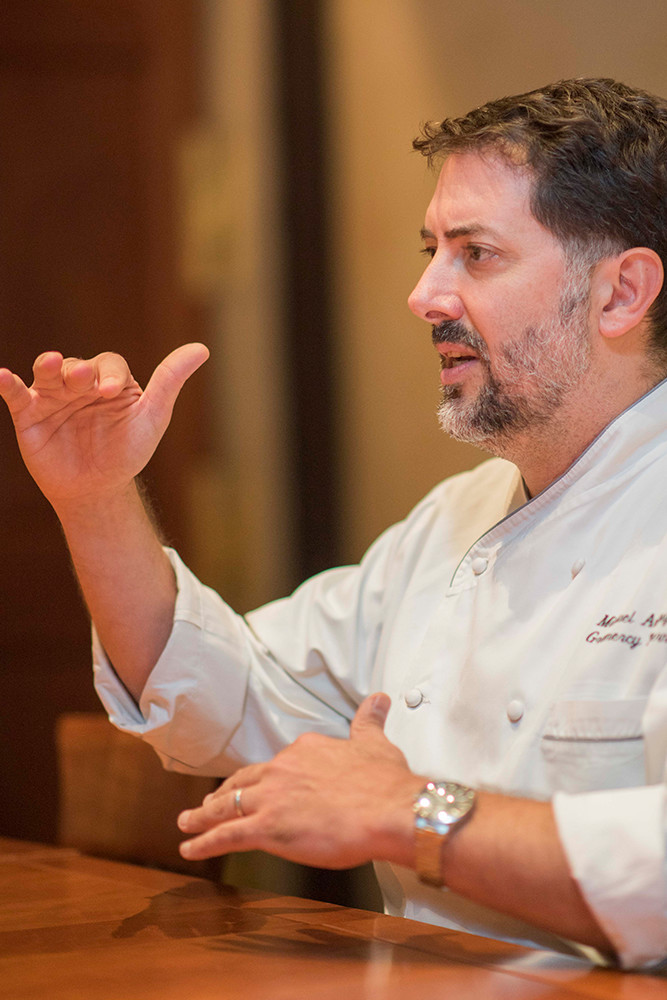
Our company as a whole has made a commitment to the restaurant industry to end our tipping policy about two years ago. We wanted to decrease the inequity of compensation throughout our teams because legislation in New York State and across the country doesn’t allow for tips to be shared evenly within a restaurant environment. And if you trace tipping back to its origins, it is a remnant of a deeply biased system that was rooted in slavery. If you fast-forward to today in the United States, tipping is still associated with negative attributes such as individual consumer gratification and individual employee compensation. It can produce a certain stigma and, in some cases, outright abuse that individuals deal with in order to earn a living. And it is often women and minorities who bear the brunt of this abuse. It creates a very uinequitable situation. That’s the big picture.
The day-to-day reality in big cities like New York is that fancy restaurants like Gramercy Tavern cling to the notion of tipping to manage the cost of a large staff. Every time a restaurant feels a wave of success and raises its prices, all of the service staff will directly benefit – if the check increases, the average tip increases. But the kitchen staff, who are paid an hourly wage, see a very minimal increase, if one at all, despite rising prices and the growing topline revenue of the restaurant. We said enough to this system.
Our restaurant is all about teamwork. Switching to a no-tipping policy encourages professional culture in our restaurants and eliminates the marginal and transient quality that plagues the American restaurant industry. It helps everyone share a certain pride and dedication to our restaurant the way that most people are used to experiencing in Japan and in France. This professional culture lets people build careers. More of our staff are traveling the world to learn about culture and cooking instead of hustling to earn a dollar. It has opened up a considerable amount of equitability for staff of all stations. A mother with a child at home can now work lunch shifts, a coveted position that was often held by senior male captains, for the same salary. Passionate people from all walks of life – from high school graduates to elite university graduates – can look at our pay scale and calculate how long will it take to move through the ranks. The reality has become very transparent. Anyone who is interested can now see how people move throughout our organization, and we look to hire people who will be engaged in every position and who ultimately want to become chefs and managers.
From the Kitchen to the Community
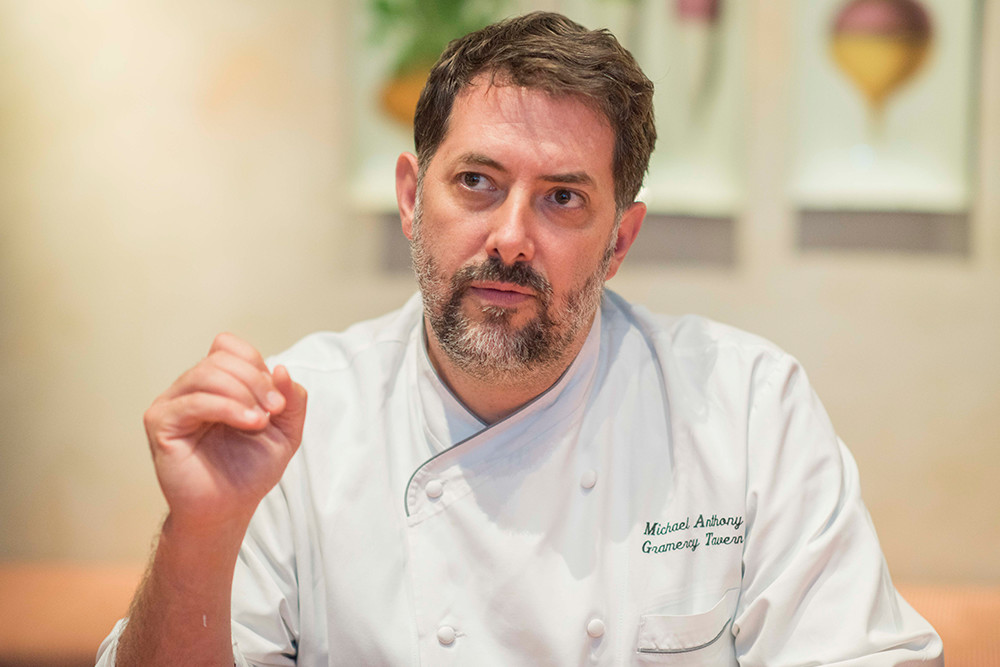
The American culture has homogenized our palette and flattened our notion of what seasonality is. Sometimes for the better. Isn’t it great living in a city where you can eat anything you want, at any hour of the day, in any form, from anywhere in the world? But I would say it’s more interesting to tell our American story through the lens of what grows here. That wonderful and sad emotional experience of seeing something that is so beloved fade and die, only to be reborn and come back the next year. We may even ask ourselves what we are doing to help amplify those feelings. What are we doing to preserve them so future generations will be able to experience the same thing? It ties us into this connection with environmental issues. It squarely positions us as chefs, cooks, and restaurant people to become educators. We have something to add to our community. And it allows us to build on our culture and allows the world to see how exciting it is to be living and working in a place like New York City or, more broadly, in the United States of America.
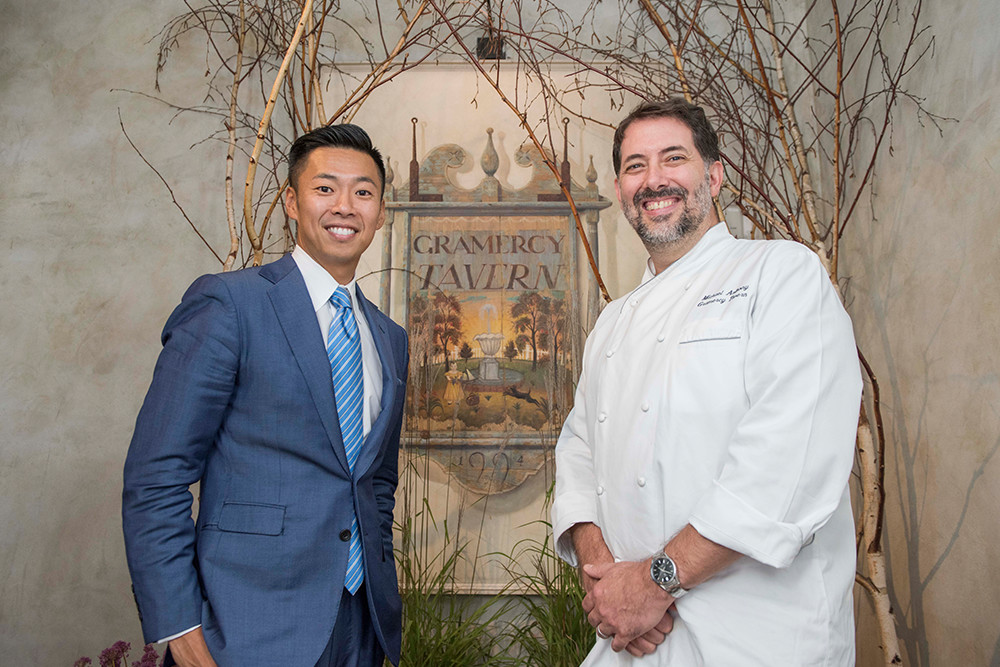
Visiting Gramercy Tavern was a great opportunity to hear Michael’s insights and the concepts behind the restaurant. I was surprised to learn that the restaurant even has a dedicated florist who creates fresh flower displays to welcome customers. Michael also gave me a tour of the restaurant, so I was able to see how the kitchen works and also how energetic the staff is. If you’re in New York, you definitely have to visit Gramercy Tavern. Two thumbs up!
Interview conducted in November 2017 at Gramercy Tavern in New York. Editing: My Philosophy Editorial Team. Photography by Sebastian Taguchi.




